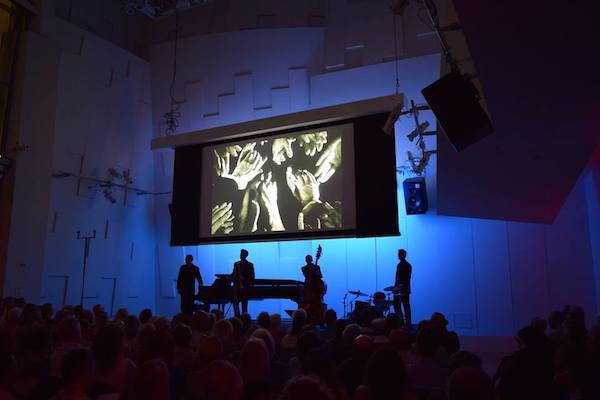
To clap or not to clap
By Sebastian Spreng, Visual Artist and Classical Music Writer
“How, when and where?” to applaud at a classical music concert is an eternal subject of heated controversy. Everyone has an opinion backed by good reasons, but what do musicians themselves, the younger generation in this case, think?
As part of the series Inside the Music, 13 talented members of the New World Symphony – America’s Orchestral Academy – addressed the issue, displaying a fresh, entertaining and comforting approach, with just the right touch of irony. In the episode titled The Emancipation of Applause, a group of musicians headed by cellist Rosanna Butterfield, who conceived and put together the presentation, laid out the history of applause, setting down the ground rules, or lack thereof, before the concert proper began. Playing onstage and ready to throw off all convention, the musicians declared it was strictly forbidden to tell other members of the audience to be quiet.
From the stage, they urged patrons not to become “noise police,” echoing former New York Times chief music critic Bernard Holland, who wrote, “Concertgoers like you and me have become part police officer, part public offender. We prosecute the shuffled foot or rattled program, the errant whisper or misplaced cough. We tense at the end of a movement, fearful that one of the unwashed will begin to clap, bringing shame on us all. How serious we look, and how absurd we are.” No one is exempt.
Perhaps impelled by Beethoven’s dictum, “Silence is not what we artists want; we want applause,” the string quartet enthusiastically tackled a divertimento and later the adagio of Mozart’s String Quartet in C (Dissonance) plus grandpapa Haydn’s String Quartet in E-flat Major (The Joke), white wigs and all. From the 19th century palace to the salon, from imperial to bourgeois Vienna, came Fritz Kreisler’s sentimental Capriccio Viennese via Dima Dimitrova’s sweet violin and Aya Yamamoto’s piano. It was followed by Mendelssohn’s Song Without Words for Cello and Piano, featuring a remarkable Butterfield.
It should be noted that the cellist’s talk evinced meticulous research. From Parsifal’s Wagner and wagnerians to Mendelssohn and more, it was full of juicy anecdotes and historical insights, such as how conventions adopted during the Romantic period (for example, not applauding between the movements of a symphony or concert in order to appreciate the composition as a whole) buried Mozart’s classical innocence. (Fortunately, applause after an aria or ballet solo survived.) Butterfield’s was an account of how the serious became too serious, and the pleasant salon became a rigid museum.
All severity ended when Butterfield launched into John Cage’s famous 4’33”. Cage’s piece still produces puzzlement when not astonishment, conclusive proof that it’s not easy to listen to silence or inward contemplation, especially in a group. In the role of “clappers,” Nicholas Platoff and Michael McCarthy performed a faultless rendition of Steve Reich’s Clapping Music. For dessert, we enjoyed a sample of jazz’s traditional relaxed clapping, to Charlie Parker’s Billie’s Bounce, featuring Michel Linville, Kelton Koch and David Connor.
Before the brief Q & A session, Butterfield quoted Alex Ross: “People often ask whether classical music has become too serious. I sometimes wonder whether it is serious enough. Certainly, it has acquired a veneer of solemnity, but too often that veneer is a cover for business as usual. I dream of the concert hall becoming a more vital, unpredictable environment, in thrall to the wildly diverse personalities of composers and performers alike. Music should be a place where our expectations are shattered.”
The only rule for concertgoers is nothing more – and nothing less – than to listen attentively and connect with the music and its performers in a concert hall, an increasingly unique sphere in which to gather to share and appreciate an art as irreplaceable as it is incomparable. Years ago, a famous art exhibit displayed at the entrance a sign that read: “Art doesn’t bite.” Music doesn’t, either, and applause even less. That is the way it is experienced, practiced and transmitted by this enthusiastic generation of young musicians who are worthy of the most respectful applause.
Recent Content
-
Artsarticle ·
-
Artsarticle ·
-
Artsarticle ·
